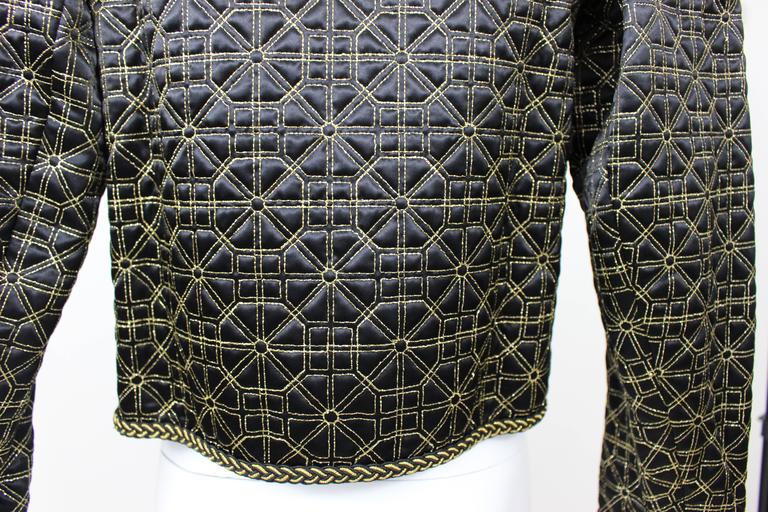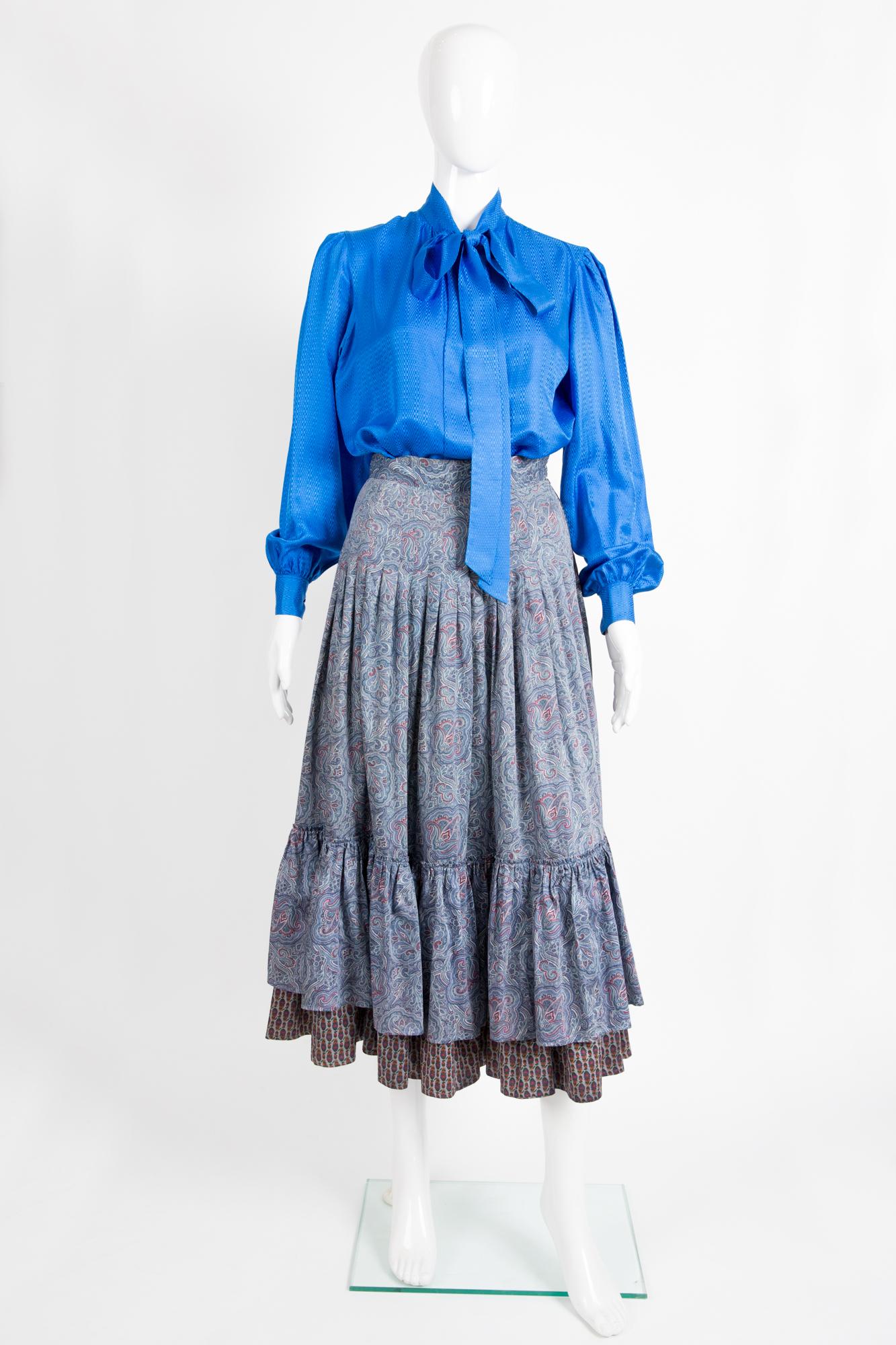

He experimented repeatedly with styles of both the Belle Époque and the interwar years. Historical pastiche was a key element of Yves Saint Laurent’s work during the 1970s. During this period, Rive Gauche was Saint Laurent’s laboratory, a place where he could experiment freely with new themes and ideas. While these collections have become emblems of Saint Laurent’s couture genius, he in fact first showed Russian- and Chinese-inspired looks in his ready-to-wear. By the mid-1970s, he was using the exotic to inform some of his most opulent and fantastical creations, such as his “Ballets Russes” and “Opium” couture collections.

Saint Laurent turned to “exoticism” during the 1960s in order to challenge the traditional evening gown. Within this tradition, clothing-punctuated by distinctive accessories, prints, and vibrant colors-plays a crucial role in creating an exotic fantasy that is immediately recognizable to a western audience. Yves Saint Laurent’s use of the “exotic” was deeply rooted in the French and literary tradition of orientalism. Ironically, he is rarely recognized for his innovative contributions to the craft of dressmaking. Halston’s couture-constructed iterations of ethnic dress were devoid of all internal structure, so that his garments flowed and caressed the body. Caftans were folded like envelopes and sewn on the bias, while sarong-tied dresses made from one piece of fabric were meticulously sewn along a single, spiraled seam. Instead, he developed garments that relied on highly sophisticated and unique construction methods, akin to those employed by classic couturiers such as Madame Grès. Close OpenĪs an advocate of minimalism throughout the 1970s, Halston rejected the ornamental and decorative elements of hon-Western dress favored by most of his contemporaries. Made of Ultrasuede, a machine washable fabric, the shirtwaist dress was subtle and sexy, with buttons that commenced at the breastbone rather than the neckline. His most famous garment, the shirtwaist dress, was a subtle adaptation of a man’s shirt. These pieces were nearly identical to the daily uniform that Halston himself wore: a cashmere turtleneck, a matching cardigan or loosely cut jacket, and a pair of trim trousers. Unlike Saint Laurent, who crafted literal versions of menswear for women, Halston perfected a spare but luxe choice of unisex elements that became the foundation of his daytime designs for women. Out of this grew may of his wardrobe “essentials,” including jumpsuits and blouson jackets, as well as a wide range of coordinated separates that formed the backbone of his ready-to-wear line, Rive Gauche. Of course, Saint Laurent’s interest in menswear went beyond merely putting women in pants-he admired a male approach to dressing. His exploration of menswear elements reached its zenith during the 1970s, when pants became a staple of the fashionable woman’s wardrobe. During the following years, he experimented in his womenswear with a range of masculine archetypes that led to his “safari” and “gangster” looks. Yves Saint Laurent caused a sensation when he debuted his woman’s “ le smoking” tuxedo in 1966. Yves Saint Laurent + Halston: Fashioning the 70s will travel to the Baker Museum in Naples, FL, and will be on view from November 7, 2015–March 6, 2016. The exhibition highlights the distinctive hallmarks of each designer, such as Saint Laurent’s brilliant use of color, drama, and fantasy, and Halston’s unaralleled mastery of modernism and minimalism. By mid-decade, Halston and Saint Laurent had taken control: now it was they who were transforming the fashion world. Fashions on display in this exhibition also reveal that such aesthetic overlap was crucial to the designers’ maturation as artists. When the 70s began, Halston and Saint Laurent were responding to this transformational world with ideas that were remarkably similar. It saw dress codes grow increasingly relaxed, and high fashion begin to incorporate vintage clothing and non-western dress. It was the decade that witnessed the demise of haute couture’s majestic reign and the ascendance of designer-led conglomerates. The 1970s was an era of constant change and fragmented fashions, sandwiched between the counterculture 1960s and the opulent 1980s.

This exhibition, displaying objects drawn solely from the Museum at FIT’s permanent collection, is the first to juxtapose their work and analyze it in that context. As the dominant clothing creators in Paris and New York during the 1970s, they were superstars. Yves Saint Laurent and Halston are two of the best known fashion designers in modern history.


 0 kommentar(er)
0 kommentar(er)
